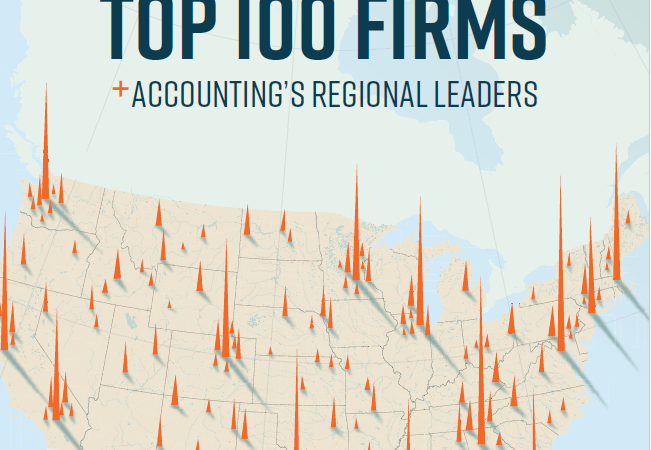The CARES Act provides employers with an Employee Retention Credit to assist in retaining employees throughout the COVID-19 emergency. Eligible employers can claim this credit for wages paid after March 12, 2020, and before January 1, 2021. The following information is presented as an update, intended to supplement our previous guidance which can be found here.
Overview
Eligibility for the Employee Retention Credit is based on the facts and circumstances of a specific employer – there is no bright-line test to determine eligibility. As such, a detailed analysis must be done by each employer applying for Employee Retention Credits to determine how the employer has been affected by COVID-19.
The first step for any employer is to determine if they meet the definition of an eligible employer. Once an employer determines if they qualify as an eligible employer, the second step is to calculate the amount of qualified wages for which the credit may be claimed.
Eligible Employer
Any employer (including a tax-exempt organization) is eligible for the Employee Retention Credit if:
- operations were fully or partially suspended due to a COVID-19-related governmental order, OR
- gross receipts declined by 50 percent as compared to the same quarter in the prior year.
Exception: Small businesses that receive loans under the Paycheck Protection Program and governments and their instrumentalities are not eligible for Employee Retention Credits.
Essential Businesses
An employer that operates an essential business, as defined in applicable governmental orders, may have suspended operations if a governmental order limits the hours an essential employer can operate or limits the services an essential employer can provide. However, essential employers are not considered to be fully or partially suspended when the governmental order allows the employer to remain open, even if the employer is negatively impacted by the order. For example, an essential employer that is not required to close its physical locations under a government order will not be considered partially suspended even though the essential employer’s customers or clients are subject to a stay-at-home order and they cannot visit the business. Although, an essential employer may be considered partially suspended when its suppliers are unable to deliver crucial goods or services because of a government order causing the supplier to suspend their operations.
Fully or Partially Suspended Operations
When a governmental order related to COVID-19 limits commerce, travel, or group meetings in a manner that prevents an employer from operating at normal capacity, the employer may have fully or partially suspended operations. However, an employer subject to a governmental order, who is able to maintain “comparable” operations through telework or other means, will not be eligible for the Employee Retention Credit. The term “comparable” is not defined – leaving some uncertainty as to what amount of disruption is required before operations are considered partially suspended.
For example, if an employer’s workplace is closed by a governmental order and the employer is able to continue some, but not all of their operations remotely, the employer may be eligible for the credit because the employer is not operating at a normal capacity and the employer is unable to continue “comparable” operations through telework alone. Similarly, if an employer’s workplace is partially closed by a governmental, but remains open for limited purposes, the employer’s operations would be considered to be partially suspended (assuming the suspended activities cannot be shifted to remote work).
Multiple Workplace Locations
In the case of employers who operate in multiple jurisdictions and are subject to governmental orders limiting operations in some, but not all, jurisdictions, these employers are considered to have a partial suspension of operations in all locations if the employer has established a policy to operate in a consistent manner in all jurisdictions and that policy complies with the local governmental orders, as well as the Center for Disease Control and Prevention (CDC) recommendations. CDC recommendations alone are not considered governmental orders.
Qualified Wages – 100 or Fewer Employees
For eligible employers who had 100 or fewer employees on average in 2019, the credit is based on all wages paid to employees during the period of suspended activities or significant decline in gross receipts, regardless of whether the employees performed services or worked during the time for which they were paid. Additionally, any wages paid to employees under a preexisting vacation, sick and other leave policy during the period of the full or partial suspension of operations or the significant decline in gross receipts are considered qualified wages for purposes of the Employee Retention Credit.
Qualified health plan expenses paid or incurred by an eligible employer to provide and maintain a group health plan are also included in qualified wages, The amount of qualified health plan expenses included in qualified wages generally includes both the portion of the cost paid by the employer and the portion of the cost paid by the employee with pre-tax salary reduction contributions, but only to the extent that those amounts are excluded from the gross income of employees. Additionally, an employer cannot claim a credit for health insurance premiums paid for furloughed workers when no other wages are paid to those workers.
Qualified Wages – Greater than 100 Employees
If an eligible employer had more than 100 employees on average in 2019, the credit is allowed only for wages paid to an employee for time the employee is not providing services. For example, if an employee is paid 40 hours of wages, but they are only able to work 10 hours due to suspended activities, the employer is eligible for a credit on 30 hours of wages paid to the employee for the time the employee was not able to work. Also, for employers averaging more than 100 full-time employees in 2019, the employer may not treat as qualified wages amounts paid to employees for paid time off for vacations, holidays, sick days, and other days off.
A loss of productivity does not amount to not providing services. An employee who is teleworking 40 hours per week but whose productivity is only 70% of what it would normally be in the office is still considered to be providing 40 hours of service to the employer. Similarly, a change in the type of work an employee performs would not amount to an employee being unable to work. For example, an employee who completes training or other projects because they are unable to complete their normal work is still considered to be providing services to the employer.
Employers that averaged more than 100 full-time employees in 2019 may not include health plan expenses allocable to the time for which employees are receiving wages for providing services; only the portion of health plan expenses allocable to the time that the employees are not providing services are treated as qualified wages, for purposes of the Employee Retention Credit. The amount of qualified health plan expenses included in qualified wages generally includes both the portion of the cost paid by the employer and the portion of the cost paid by the employee with pretax salary reduction contributions, but only to the extent that those amounts are excluded from the gross income of employees.
Amount of Tax Credit
The Employee Retention Credit equals 50% of up to $10,000 in qualified wages paid to an employee. The employer’s maximum credit for qualified wages paid to any employee is $5,000. The maximum credit is an aggregate total across all quarters. For example, an employer claiming $4,000 of credit for $8,000 of qualified wages paid in Q2 may only claim $1,000 of credit in Q3, even if qualified wages were also $8,000 in Q3.
Credits claimed based on full or partial suspensions due to a governmental order may only be claimed for qualified wages paid during the time the governmental order was in effect.
Claiming the Credit
Beginning with the second calendar quarter of 2020, employers will report their total qualified wages and the related health insurance costs for each quarter on their quarterly employment tax returns, usually Form 941. If credits exceed payroll tax liabilities, a refund of credits will be issued upon filing of Form 941.
An employer anticipating credits may reduce their federal employment tax deposits by the amount of the credit. Employers have the ability to both reduce deposits for the credit AND to defer the deposit of all of the employer’s share of social security tax due before January 1, 2021 (under a separate provision in the CARES Act). Employers with immediate cash flow needs may request an advance payment of the credit from the IRS by submitting Form 7200, Advance Payment of Employer Credits Due to COVID-19.
Records for Substantiation
Employers claiming the Employee Retention Credit must keep records supporting: 1) eligible employer status, and 2) the amount of qualified wages reported on Form 941. Employment tax records for at least four years. For employers with more than 100 employees, additional documentation must be retained in order to substantiate the time for which employees are paid for not providing services. A time entry sheet completed by employees documenting how their time is spent would substantiate time employees are not performing services.
Effect on Income & Deductions
An employer receiving an Employee Retention Credit does not include the credit in gross income for federal income tax purposes. Neither the portion of the credit that reduces the employer’s applicable employment taxes, nor the refundable portion of the credit, is included in the employer’s gross income. For tax-exempt entities, there is no indication that disallowed deductions related to Employee Retention Credits will result in Unrelated Business Taxable Income (“UBTI”).
However, the Employee Retention Credit reduces expenses that an employer could otherwise deduct on their federal income tax return. Section 280C(a) of the IRC generally disallows a deduction for the portion of wages paid equal to the sum of certain credits determined for the taxable year. Accordingly, a similar deduction disallowance would apply for the Employee Retention Credit, such that an employer’s aggregate deductions would be reduced by the amount of the credit.
Conclusion
Employers affected by COVID-19 should carefully consider their eligibility for the Employee Retention Credit. Each employer is unique in their operations, so eligibility must be determined based on an employer’s individual circumstances. Calibre CPA Group’s specialists can advise our clients through the multi-step process to determine if they qualify for Employee Retention Credits.
DISCLAIMER: The IRS continues to publish additional guidance and instructions regarding the employee retention payroll tax credit. As such, information presented is subject to change.
Prepared By:
Justin W. Herring, CPA MST | Tax Manager




